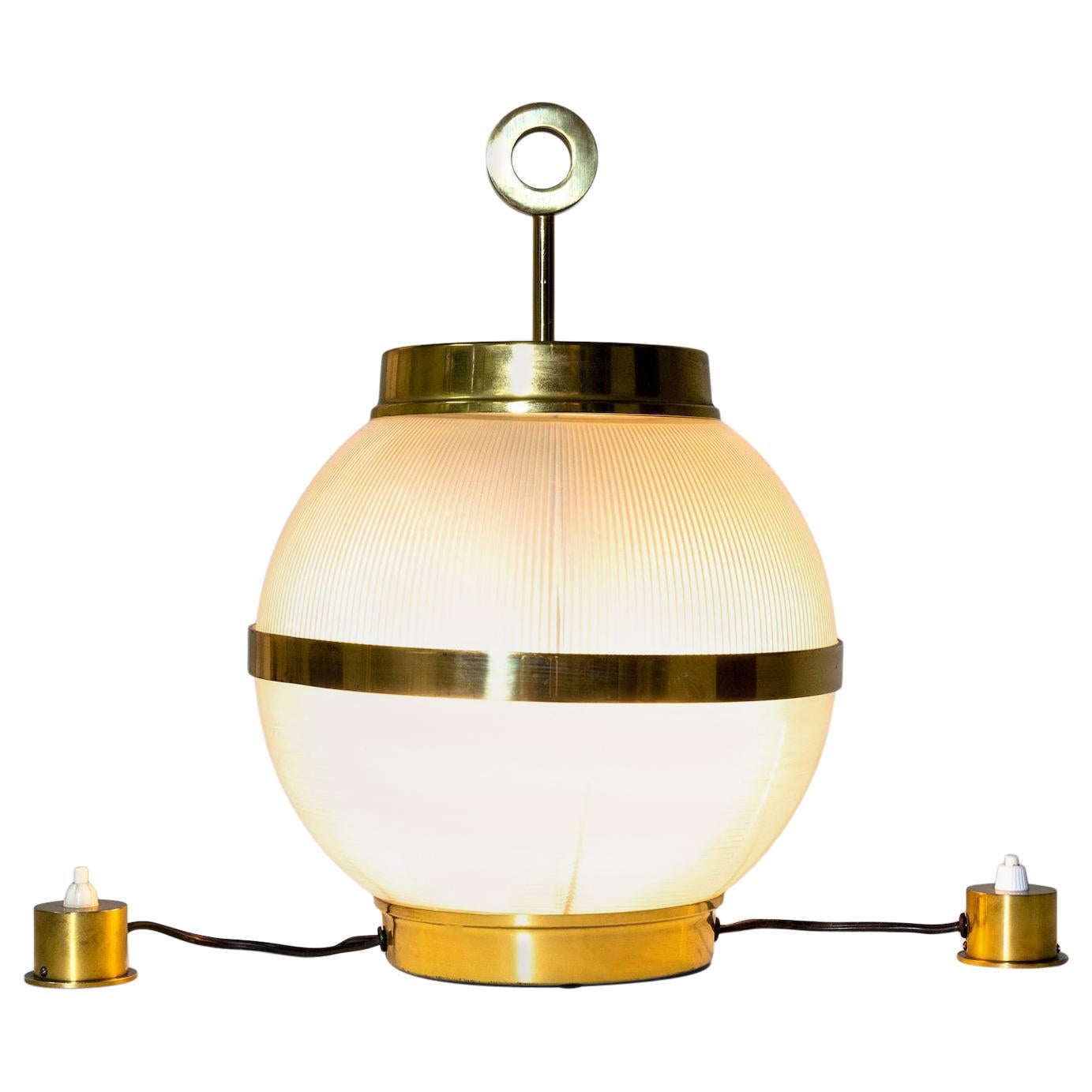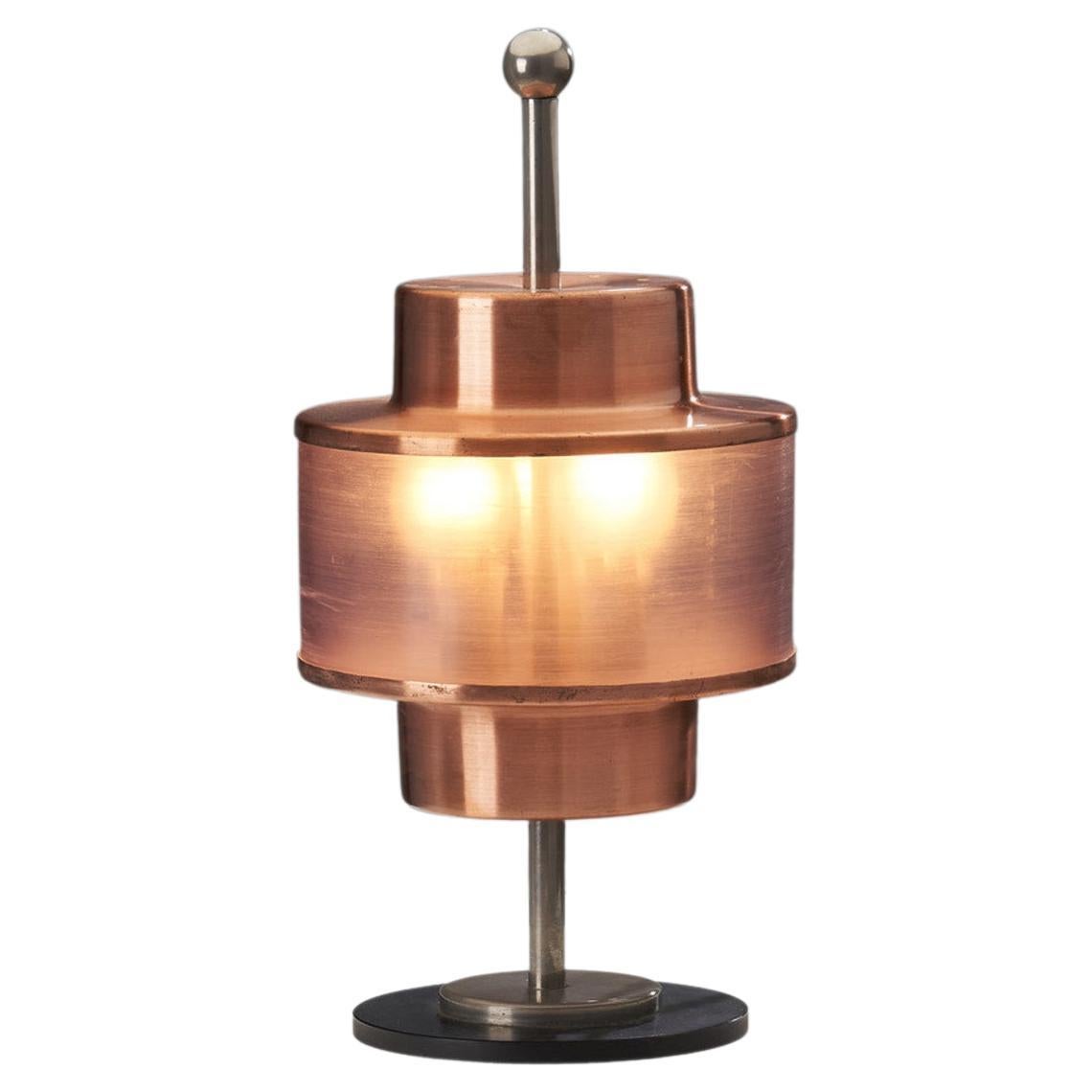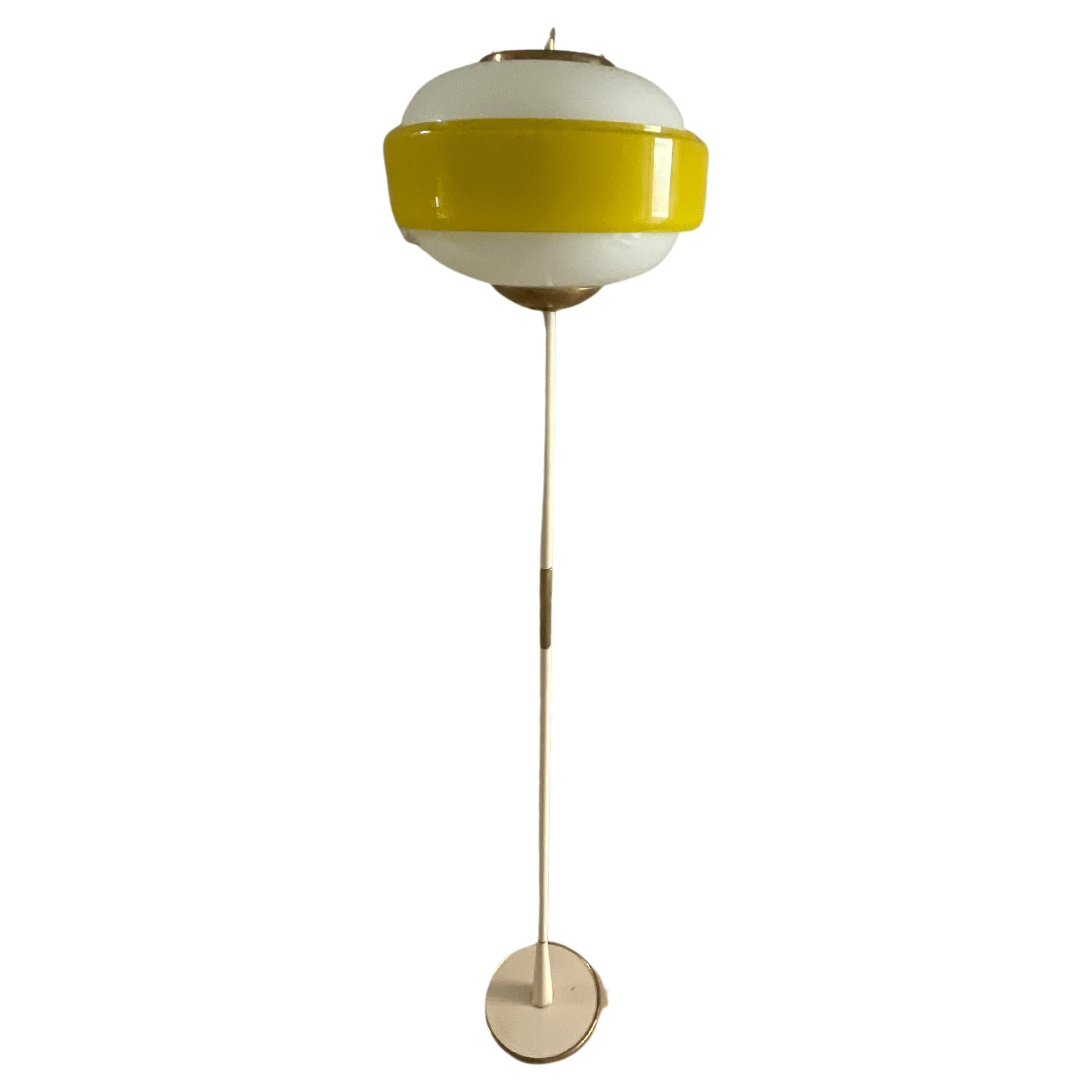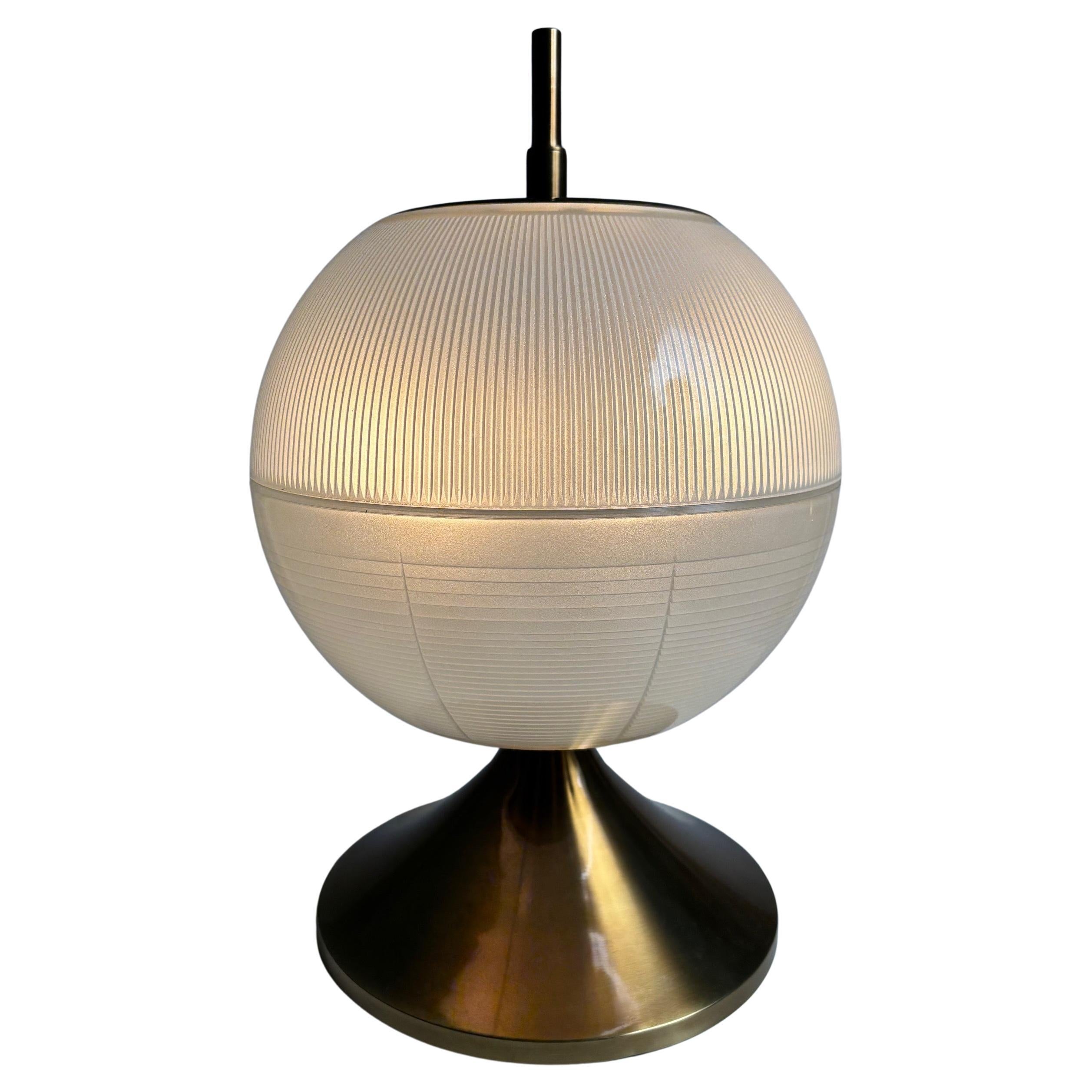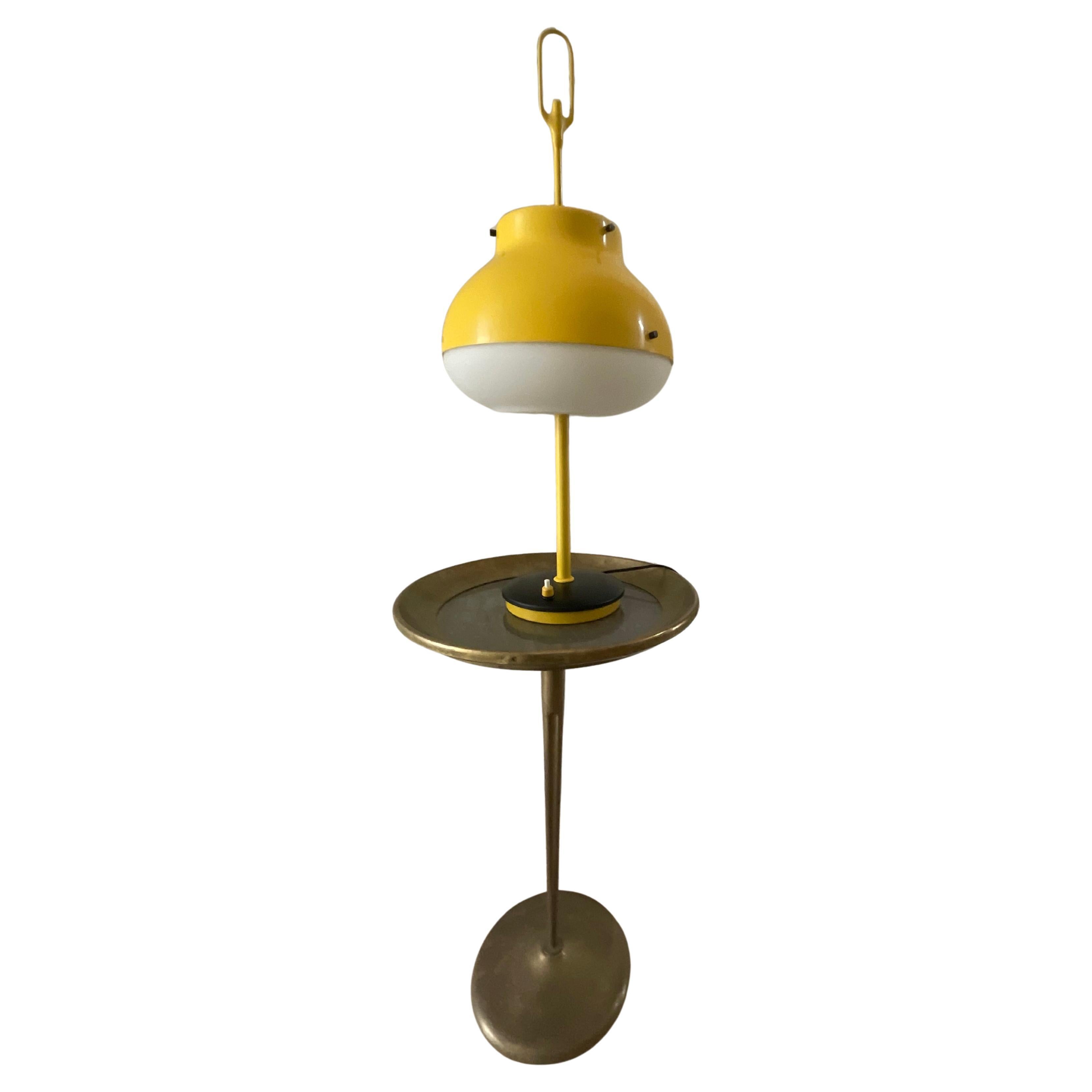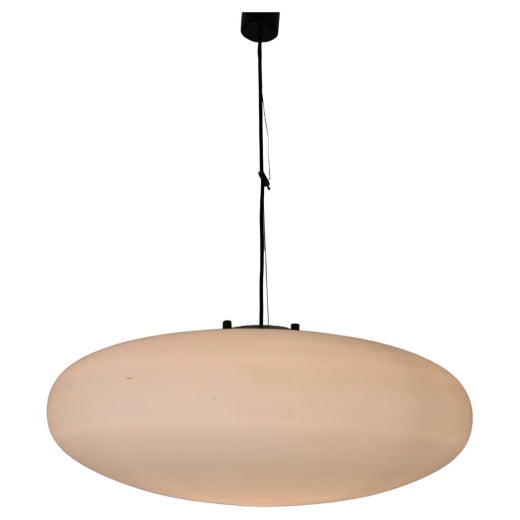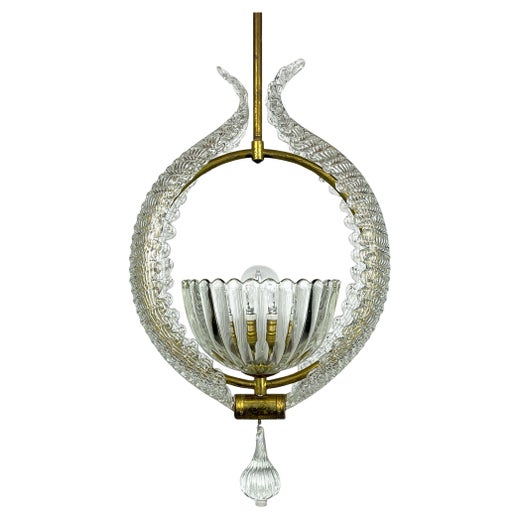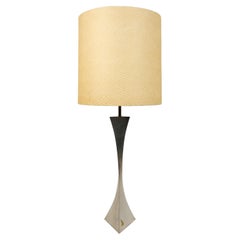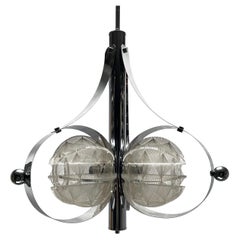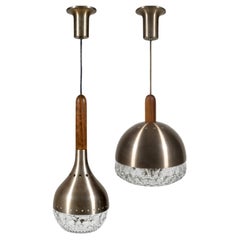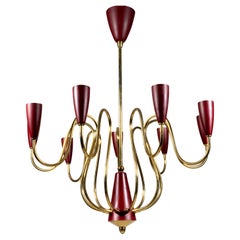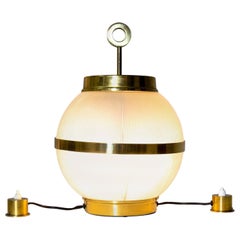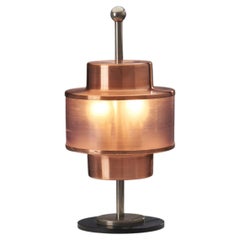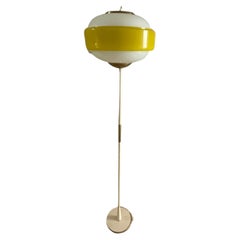Mid-Century Tea Morosati Table Light by Stilnovo and Barovier & Toso, Italy
About the Item
- Creator:
- Dimensions:Height: 31.5 in (80 cm)Diameter: 11.82 in (30 cm)
- Power Source:Plug-in
- Voltage:110-150v,220-240v
- Lampshade:Not Included
- Style:Mid-Century Modern (Of the Period)
- Materials and Techniques:
- Place of Origin:
- Period:
- Date of Manufacture:1950-1960
- Condition:Wear consistent with age and use.
- Seller Location:Regensburg, DE
- Reference Number:1stDibs: LU9228241615062
Stilnovo
Though Bruno Gatta founded Stilnovo way back in 1946, it is still one of the most instantly recognizable names in lighting. Gatta (1904–76) began his business in Milan, and, like many European creatives designing furniture and decor in the wake of World War II, he leaned toward the new wave of mass-market and streamlined styles. In fact, Stilnovo loosely translates to “new style” in Italian, and vintage Stilnovo chandeliers, floor lamps and other lighting have endured as a practical choice for those looking to bring innovative and forward-thinking design into their homes.
Soon after Stilnovo was established, Gatta’s lighting fixtures were applauded throughout Europe for their novel industrial materials as well as their unique yet functional shapes. Italy during the mid-20th century was completely revolutionary, and Bruno Gatta and Stilnovo’s head designer, Angelo Gaetano Sciolari, helped shape the era.
When the 1960s arrived, Stilnovo was experiencing such a boom that the company opened a new production plant in Lainate. One of the brand’s most famous pieces, Giovanni Luigi Gorgoni’s quirky 1965 Buonanotte spherical table lamp, became a best seller.
Gatta partnered with some of the most well-known names in design, including Ettore Sottsass, Achille and Pier Giacomo Castiglioni, Joe Colombo and Gae Aulenti. Sottsass’s pieces for Stilnovo, including the 1977 Valigia four-legged table lamp, the 1968 Lampros chandelier and Manifesto ceiling light, and the Castiglionis’ 1957 Saliscendi pendant light fixtures are some of the brand’s most recognizable to date. In 1978, De Pas, D’Urbino and Lomazzi designed the Fante lamp with an adjustable reflector that playfully recalls a broad-brimmed hat.
Stilnovo’s designs, including Danilo and Corrado Aroldi’s flexible Periscope table lamp, were featured in the 1972 exhibition “Italy: The New Domestic Landscape” at the Museum of Modern Art. While Stilnovo continued to operate with new designer collaborations after Gatta’s death, it closed its doors in 1988.
Italian art director Massimo Anselmi acquired the company in 2012 and rereleased several of Stilnovo’s most celebrated pieces. Then in 2019, lighting giant Linea Light Group purchased Stilnovo and relaunched its classic designs with contemporary touches like LED lighting systems.
Find vintage Stilnovo chandeliers and pendants, wall lights, table lamps and other fixtures and furniture on 1stDibs.
Ercole Barovier
Ercole Barovier left an indelible mark on the world of Italian modernist glassmaking — his vibrant use of color and exploration of innovative techniques yielded glass vases, chandeliers and other lighting and decorative objects that stand out in any interior many decades later.
Barovier grew up on the Venetian island of Murano, a region of the world famed for its production of artisanal glassworks. By the time he was born, in 1889, his family had already been in the glassmaking business for centuries, as the Barovier dynasty began in 1295. Nonetheless, Barovier did not choose glassmaking as his first career — he instead studied medicine as a young man before going on to work as a radio operator in the first World War.
The year after the war ended, Barovier joined his family’s business (over time, the manufactory’s names have included Fratelli Barovier, Vetreria Artistica Barovier & C. and Artisti Barovier). He was appointed artistic director in 1926, and subsequently managed the business with his brother Nicolò. From 1927 onward, Barovier was the chief designer at his family’s glassworks. He became sole proprietor in 1934, and in 1936, merged his own family business with the Venetian glass factory SAIAR Ferro Toso. They renamed the company Barovier & Toso, a name under which the company still operates today.
Early in his career, Barovier garnered praise for his work with murrine glass, one of the traditional arts for which Murano is widely known. In the 1930s, he began pushing the boundaries of tradition and experimenting with new ways to bring color into his glass objects.
Ercole Barovier is credited with having invented colorazione a caldo senza fusione, a method of introducing metals and oxides into glassworks. His style became defined by his use of riotous color and later, audacious forms. He created sculptures, table lamps and other pieces using mosaic techniques to add a kaleidoscope of striking hues to his work. Barovier had a particular gift to bring out glass’s unique properties to refract and filter light in every shade of the rainbow.
Barovier took endless inspiration from the world around him, from the play of light reflecting off the canals near his home to artworks from classical antiquity. Prior to World War II, his works included naturalistic designs including floral sconces, vine-wrapped chandeliers and sea life-inspired bowls (the manufactory was known for sinuous lighting pieces that are often described as embodying “Liberty Style” — the Italian term for Art Nouveau).
Barovier focused on reinterpreting classical techniques and styles in the postwar years. Geometrically patterned vases that recalled Ancient Greek pottery in their bold forms — as well as precisely detailed Art Deco glass serving bowls — are among his characteristic works from this period. Gold leaf was applied as a decorative flourish, and Barovier worked to ensure that his pieces reflected contemporary trends. His mid-century glass is particularly sought after by today’s collectors.
Up until his retirement in 1972, Barovier continued his exploration of the creative potential in glassmaking. His fearlessness in combining cutting-edge techniques with deeply traditional practices led him to create over 25,000 designs over the course of his life.
Barovier’s work garnered international acclaim. He received many awards and accolades, including awards at the Milan Triennial exhibitions in 1933 and 1954, the Paris Universal Exhibition in 1937, and the Compasso d'Oro in 1956.
On 1stDibs, find vintage Ercole Barovier lighting, decorative objects and serveware.
- ShippingRetrieving quote...Shipping from: Steinheim am Albuch, Germany
- Return Policy
More From This Seller
View AllMid-20th Century Italian Mid-Century Modern Table Lamps
Brass
Mid-20th Century Italian Mid-Century Modern Chandeliers and Pendants
Metal
Mid-20th Century Italian Mid-Century Modern Chandeliers and Pendants
Metal
Mid-20th Century Italian Mid-Century Modern Chandeliers and Pendants
Metal, Brass
Mid-20th Century Austrian Mid-Century Modern Table Lamps
Brass, Metal
Mid-20th Century Italian Mid-Century Modern Table Lamps
Brass
You May Also Like
20th Century Italian Mid-Century Modern Table Lamps
Brass
Vintage 1960s Italian Mid-Century Modern Table Lamps
Metal
Vintage 1950s Italian Mid-Century Modern Table Lamps
Brass
Vintage 1950s Italian Mid-Century Modern Floor Lamps
Brass, Iron
Vintage 1960s Italian Mid-Century Modern Table Lamps
Metal
Vintage 1950s Italian Mid-Century Modern Table Lamps
Metal, Enamel, Other
